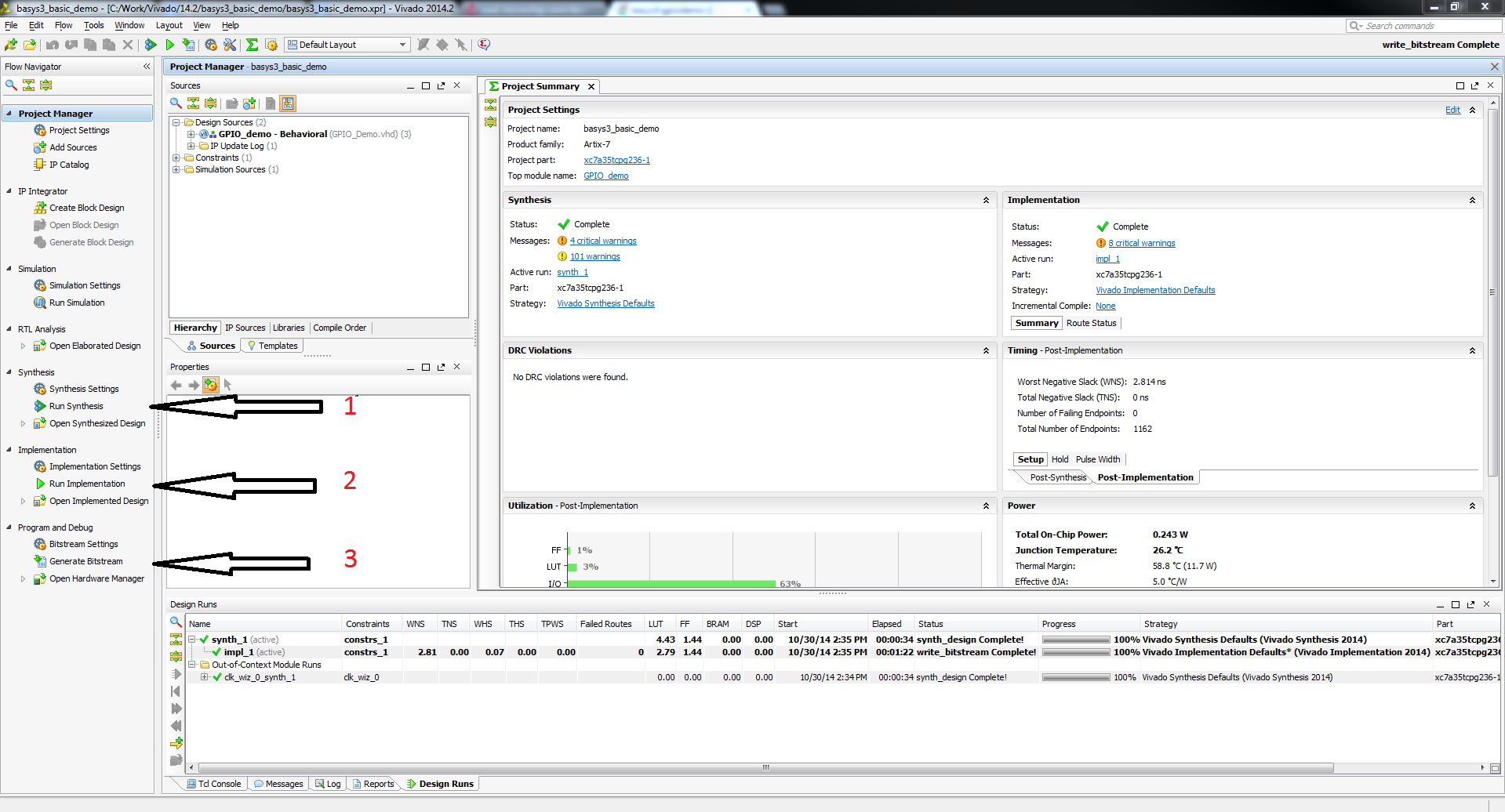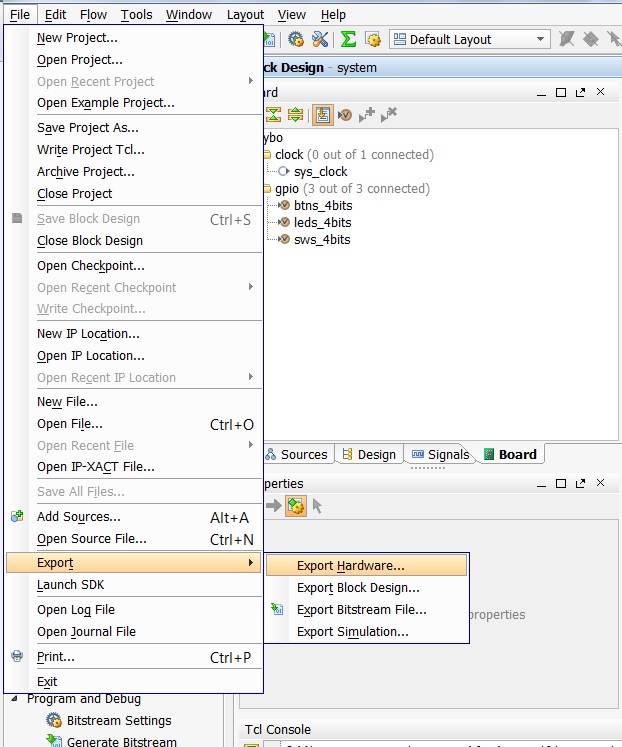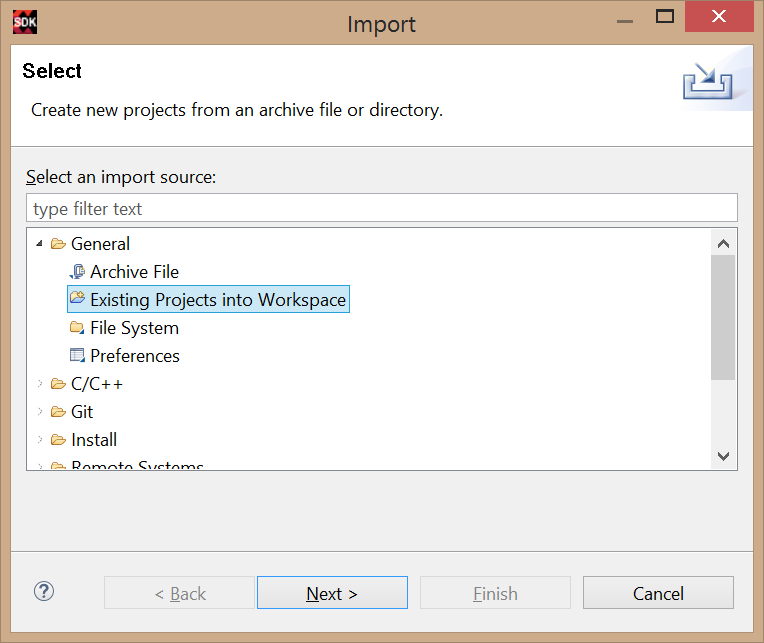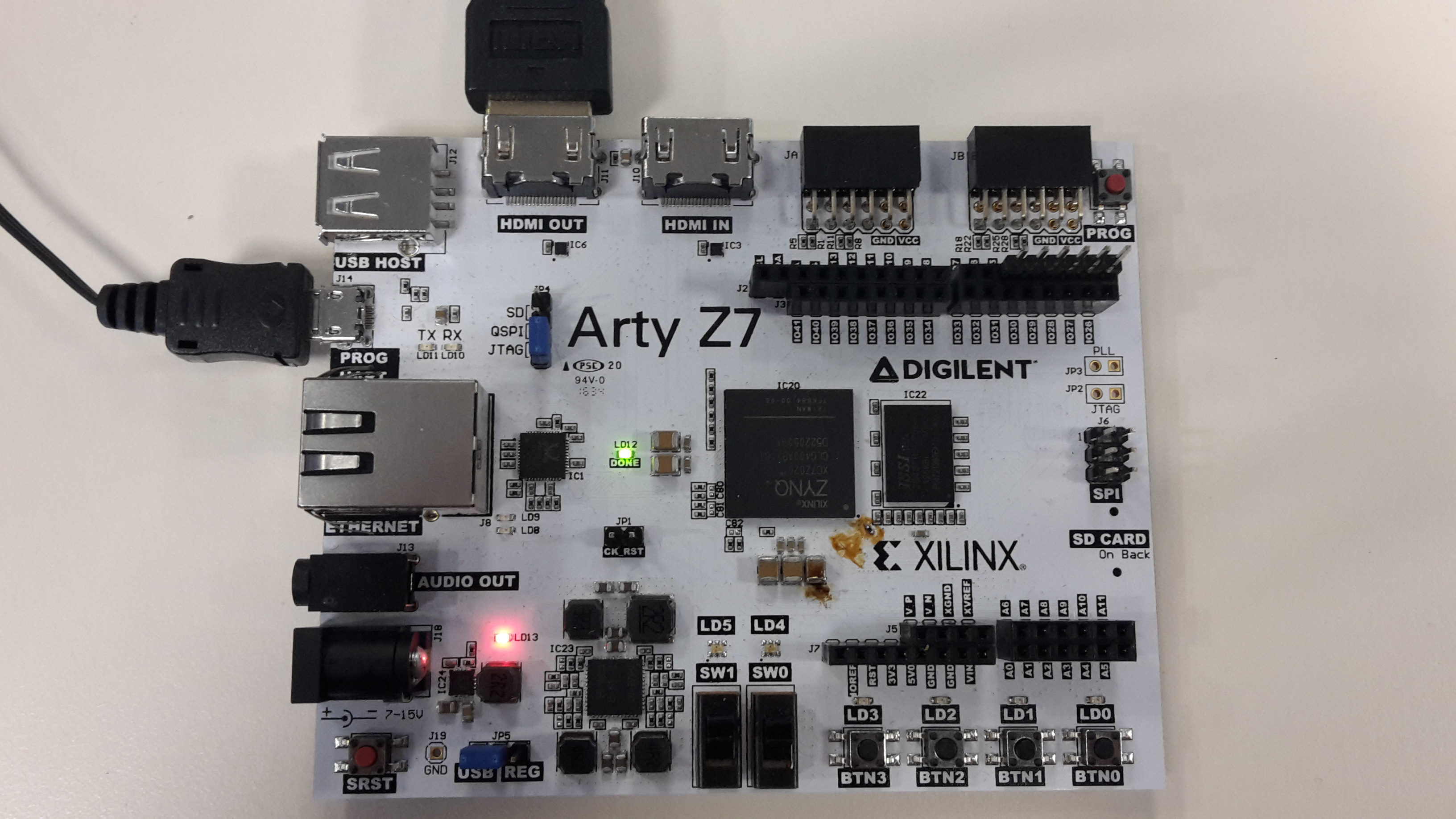This is an old revision of the document!
Arty Z7 HDMI Out Demo
Overview
Features Used
| Not Used | Used | |
|---|---|---|
| 2 user switches | X | |
| 2 user LEDs | X | |
| 2 user RGB LEDs | X | |
| 4 user push buttons | X | |
| USB-UART Bridge | X | |
| Micro SD card connector | X | |
| HDMI Sink and HDMI Source | X | |
| PWM mono audio out w/ 3.5mm jack | X | |
| 10/100/1000 Ethernet PHY | X | |
| 512MB 1050Mb/s DDR3 Memory | X | |
| Quad-SPI Flash | X | |
| Two Pmod ports | X | |
| chipKIT connector for XADC signals | X | |
| USB HID Host | X |
Description
The Arty Z7 HDMI Out project demonstrates the usage of the HDMI out port on the Arty Z7 board. There are two projects, one for each variant of the board: Arty Z7-10 and Arty Z7-20. The behavior is as follows:
- Frames stream out through the HDMI port.
- A UART interface is available to configure what is output through HDMI.
- There are 3 display frame buffers that the user can choose to display.
Prerequisites
Hardware
- Arty Z7 board
- Micro-USB cable
- HDMI cable
- HDMI source
- HDMI monitor
Software
- Vivado Design Suite & Xilinx SDK 2016.4
- Version 2016.4 must be used to generate the project
Downloads
How to...
1. Generate the Project
1.1) Download the project linked in the download section and unzip it in the location of your choosing.
1.2) Generate the hdmi_out project in the Projects folder by following this guide before continuing: How to Generate a Project from Digilent's Github
2. Build the Project
2.1) Click Generate Bitstream on the left hand menu towards the bottom. Vivado will run through both Run Synthesis and Run Implementation before it generates the bitstream automatically.
Note: If you want, you can click each step by itself in the order of Run Synthesis, Run Implementation and then Generate Bitstream.
3. Export to SDK
4. Import the SDK files
5. Program the FPGA
6. Program the Microblaze Processor
6.1) Click on the displaydemo folder and click the Green Run System Debugger on Local displaydemo.elf button. The microblaze program will be programmed onto your Arty Z7 board.
7. Run the Project
This portion will help you run the demo and observe all its features.










